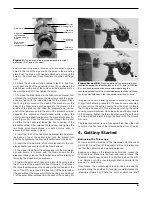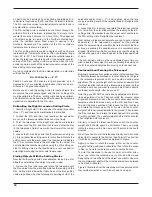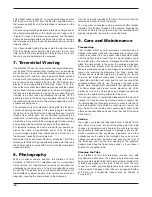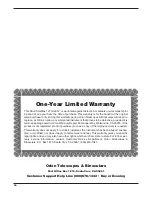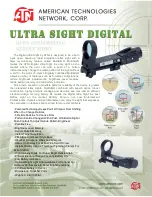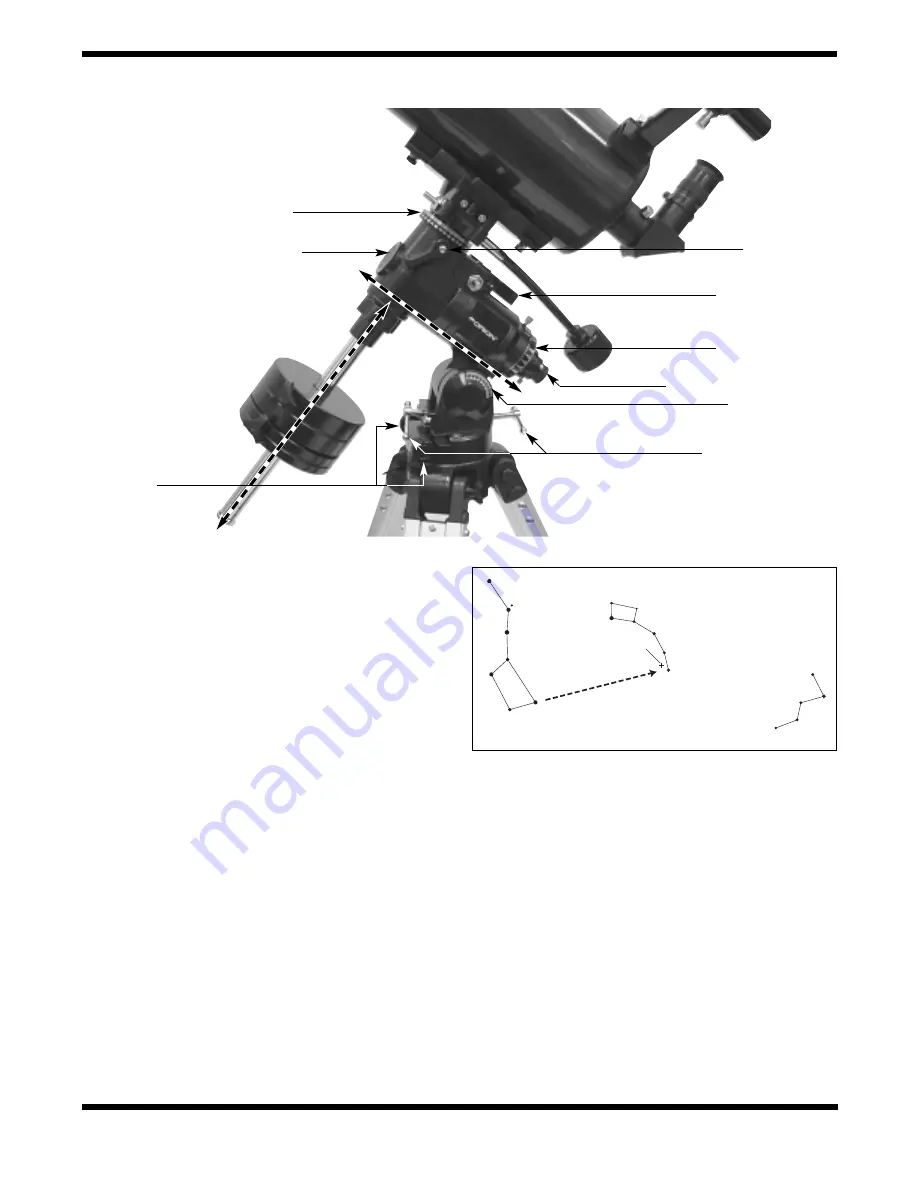
North Star, or Polaris. It lies within 1° of the north celestial
pole (NCP), which is an extension of the Earth’s rotational
axis out into space. Stars in the Northern Hemisphere appear
to revolve around the NCP.
To find Polaris in the sky, look north and locate the pattern of
the Big Dipper (Figure 7). The two stars at the end of the
“bowl” of the Big Dipper point right to Polaris.
Observers in the Southern Hemisphere aren’t so fortunate to
have a bright star so near the south celestial pole (SCP). The
star Sigma Octantis lies about 1° from the SCP, but it is bare-
ly visible with the naked eye (magnitude 5.5).
For general visual observation, an approximate polar align-
ment is sufficient.
1. Level the equatorial mount by adjusting the length of the
three tripod legs.
2. There are two altitude adjusting T-bolts (see Figure 6);
loosen one bolt while tightening the other. By doing this you
will adjust the latitude of the mount. Continue adjusting the
mount until the pointer on the latitude scale is set at the lati-
tude of your observing site. If you don’t know your latitude,
consult a geographical atlas to find it. For example, if your lat-
itude is 35° North, set the pointer to 35. The latitude setting
should not have to be adjusted again unless you move to a
different viewing location some distance away.
3. Loosen the Dec. lock lever and rotate the telescope optical
tube until it is parallel with the R.A. axis, as it is in Figure 1.
The pointer on the Dec. setting circle should read 90°.
Retighten the Dec. lock lever.
4. Move the tripod so the telescope tube (and R.A. axis)
points roughly at Polaris. If you cannot see Polaris directly
from your observing site, consult a compass and rotate the tri-
pod so the telescope points north. There is a label bearing a
large “N” at the base of the equatorial mount (Figure 8). It
should be facing north.
The equatorial mount is now polar aligned for casual observ-
ing. More precise polar alignment is recommended for
astrophotography.
From this point on in your observing session, you should not
make any further adjustments in the azimuth or the latitude of
the mount, nor should you move the tripod. Doing so will undo
Figure 7.
To find Polaris in the night sky, look north and find the
Big Dipper. Extend an imaginary line from the two "Pointer Stars" in
the bowl of the Big Dipper. Go about five times the distance
between those stars and you'll reach Polaris, which lies within 1° of
the north celestial pole (NCP).
7
Big Dipper
(in Ursa Major)
Little Dipper
(in Ursa Minor)
N.C.P.
Pointer
Stars
Polaris
Declination setting circle
Front opening in R.A. axis
Azimuth
fine adjustment
knobs
Declination
locking lever
Right ascension
locking lever
Right ascension
setting circle
Polar axis finder scope
Latitude scale
Latitude adjusting
T-bolts
DE
CL
IN
AT
IO
N
AX
IS
RIG
HT A
SC
EN
SIO
N A
XIS
Figure 6.
The
equatorial mount of the
StarMax 127mm EQ
Cassiopeia





